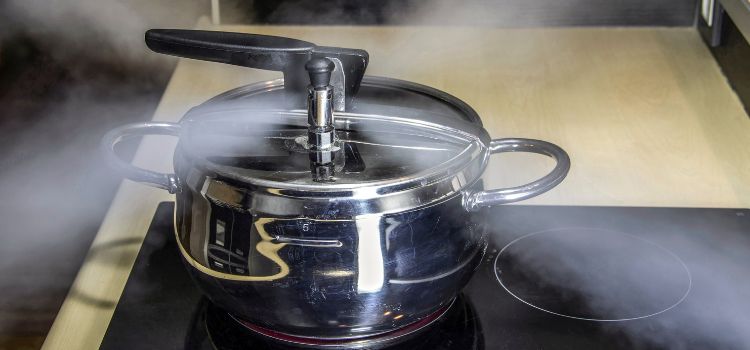As an Amazon Associate I earn from qualifying purchases.
Agar is a critical ingredient in the fields of molecular gastronomy and microbiology. This gelatinous substance, which comes from seaweed, is essential for both thickening meals and petri dish cultures. It is impossible to exaggerate how meticulous agar preparation must be, particularly when pressure cooking is involved—a technique that guarantees sterility and ideal uniformity. This thorough tutorial explores the ins and outs of pressure cooking agar, giving you the methods, schedules, and pointers you need to master this crucial procedure.

Understanding Agar and Its Importance
Because of its unique qualities, agar is essential for growing microorganisms and creating delicious dishes. It has several uses because, unlike gelatin, it can gel at comparatively low temperatures and stay solid at higher ones. Being proficient in agar preparation is essential for both scientific and culinary experiments.
How Long To Pressure Cook Agar
Pressure cooking agar is more of an art than a precise science since little changes may significantly impact the results. Once maximum pressure is attained, 10 to 15 minutes is usually the ideal duration for pressure cooking agar. This may change, however, depending on the kind of pressure cooker used, how much agar is used, and the desired consistency at the end. It would help to comprehend the subtle differences between your materials and equipment to improve this technique.
The Role of Pressure Cooking in Agar Preparation
Pressure cooking agar is a sterilizing procedure that guarantees the removal of impurities rather than merely boiling it. This is extremely important in scientific applications, where maintaining the integrity of cultures is critical. The water’s boiling point rises in the high-pressure atmosphere, enabling temperatures that completely sterilize the agar solution.
Optimal Pressure Cooking Time for Agar
Knowing the ideal pressure cooking duration is essential to preparing agar to perfection. Applying 15 psi (pounds per square inch) for 15 to 20 minutes is generally advised. This amount of time is enough to sterilize the agar without causing any degradation in its gelling qualities. Nevertheless, modifications can be required depending on the agar solution’s volume and concentration.
Step-by-Step Guide to Pressure Cooking Agar
Mixing the Agar Solution: Begin by dissolving agar powder in water. The standard ratio is 1.5% agar to water, varying depending on the desired consistency.
Transferring to Pressure Cooker: Pour the agar solution into suitable containers that can withstand high pressure. Loosely cover the containers to prevent evaporation and contamination.
Pressure Cooking: Seal the pressure cooker and bring it to a boil. Once it reaches 15 psi, maintain this pressure for 15 to 20 minutes.
Cooling: After cooking, turn off the heat and allow the pressure cooker to cool naturally. This gradual cooling helps prevent the formation of condensation on the agar.
Pouring the Agar: Once cooled, the agar is ready to be poured into petri dishes or molds. If used for microbiological purposes, ensure the environment is as sterile as possible during this step.
Tips for Perfect Agar Every Time
Accuracy in Measurements: Precision in the agar-to-water ratio is crucial. Use a digital scale for the best results.
Quality of Water: Distilled water is preferred to prevent impurities from affecting the agar’s properties, especially for scientific applications.
Avoiding Air Bubbles: Carefully pour the agar into plates or containers to avoid creating air bubbles, which may impede the development of microorganisms and the presentation of food items.
Sterilization: For applications requiring sterile conditions, sterilize all equipment and work surfaces before starting and consider using a laminar flow hood if available.
Common Questions About Pressure Cooking Agar
- Is It Possible to Re-sterilize Solidified Agar?
If agar isn’t contaminated, it can be melted down and re-sterilized. Its capacity to gel, meanwhile, may ultimately be compromised by repeated melting.
- How much time can you store pressure-cooked agar?
Pressure-cooked agar keeps well for many months if it is sealed and kept in a cold, dark area. Use it, nevertheless, within a few weeks of preparation for the best benefits.
- Can I Color My Agar with Nutrients or Colorants?
Indeed. Before pressure cooking, include any nutrients, colorants, or flavorings in the agar solution. Ensure they won’t interfere with the agar’s ability to set and work well at high temperatures.
Conclusion
Although pressure cooking agar can initially appear intimidating, it can be a simple and satisfying procedure if you have the necessary skills and understanding. You may ensure your agar preparations are consistently adequate by following the suggested boiling periods, making adjustments depending on particular requirements, and debugging any difficulties that may develop. Learning how to pressure cook agar may expand your cooking experiences regardless of your experience level, whether you’re a hobbyist or a professional chef.
As an Amazon Associate I earn from qualifying purchases.








